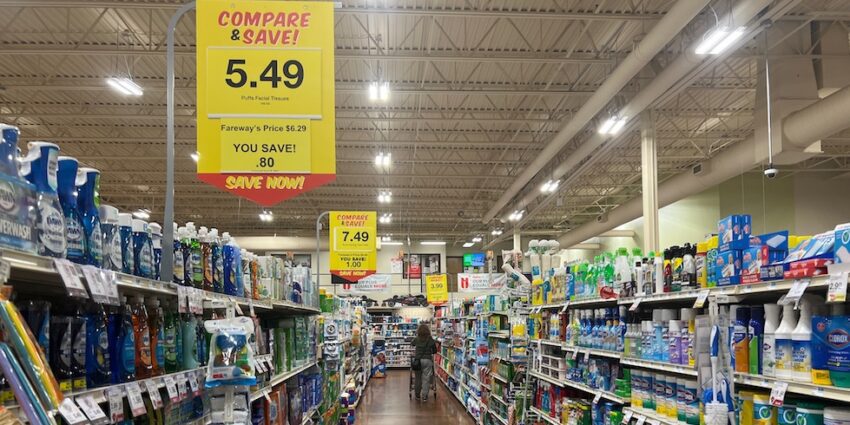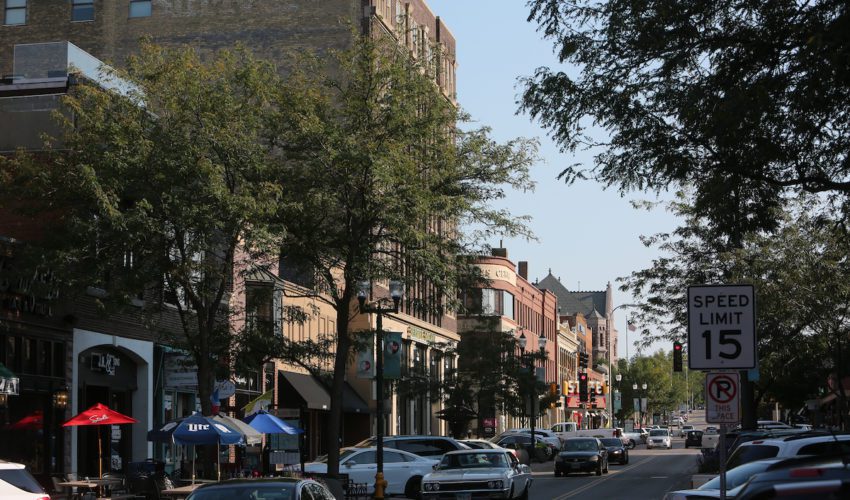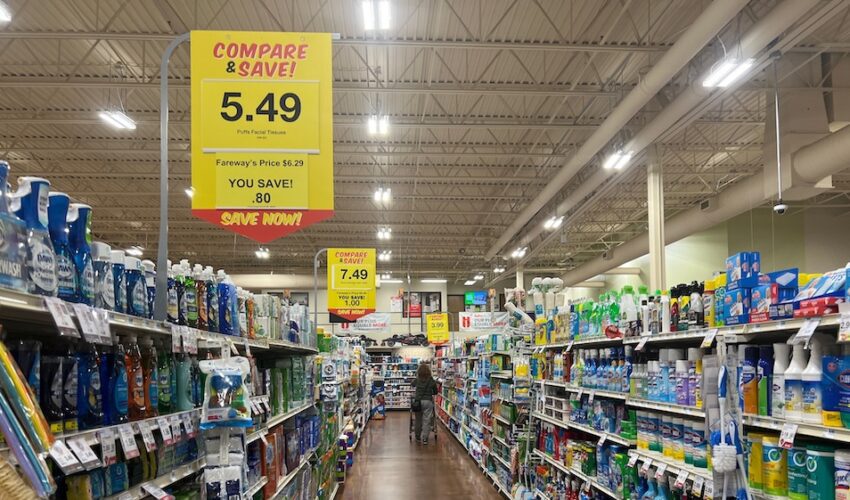Jodi’s Journal: The consumer, the remote worker and the coming cliff
June 4, 2022
If you want a glimpse into the future, I’m afraid all you have to do is walk the aisles of a grocery store and listen.
That’s what I did over the Memorial Day weekend, and it didn’t take long before the comments reached my ears.
From mutterings to a borderline outburst, my fellow shoppers clearly couldn’t believe how the items in their carts were beginning to add up.
Filling half a tank of my sedan – at a discount – just cost me $40. The national average as I write this is $4.82 per gallon. On the West Coast it’s well over $5, and in California it’s over $6.
I clearly can remember the last time paying for the basics felt like this. It was 2008, and at that time it was largely just fuel. Food prices and other essentials were creeping up, but not at the same rate they have today.
We all know what happened next.
It feels disjointed to be talking about a potential downturn as we reported just last week that the city of Sioux Falls surpassed $780 million in building activity so far this year.
The entire year of 2019 totaled $771 million.
But there also are projects not in that total for a reason. It’s because as owners have started to receive construction estimates, they’ve decided to put the work on hold.
Even the total itself has to be realistically interpreted in the context of increased costs layered on top of organic growth.
You might have heard last week that JPMorgan Chase CEO Jamie Dimon spoke at the Bernstein Strategic Decisions Conference and warned an economic “hurricane” is approaching.
“You better brace yourself. JPMorgan is bracing ourselves, and we’re going to be very conservative with our balance sheet,” Dimon said.
“Right now, it’s kind of sunny. Things are doing fine. Everyone thinks the Fed can handle this. That hurricane is right out there down the road coming our way. We just don’t know if it’s a minor one or Superstorm Sandy … or Andrew or something like that.”
The signs of a coming storm are there, and whatever the Fed decides to do about the rate environment really is only part of the picture that becomes more clear walking through a grocery store.
Consumers are wearing out. Look at April retail sales reported from Walmart and Target as one glimpse into how spending is slowing down.
Then try to price out an airline ticket. If you thought filling up the tank was bad, wait until you see what has happened to those fares. The most affordable fare for a round-trip flight on a legacy carrier in July in Sioux Falls is averaging more than $500. A fare that typically would have cost me $400 to $500 is now more than $1,000 – and I’m not trying to go overseas or anywhere exotic.
But people are buying those tickets anyway because they’ve put off vacationing. So they’re sucking it up – once – but let’s see what happens after that, including with business travel that barely has begun to rebound anyway.
For many people, the discretionary money is going to run out. We as Americans are not notorious for being savers. We watched bank account balances grow during the pandemic thanks to government funding in many cases. And that’s why the cliff I fear we could be headed toward hasn’t quite reached us yet.
But I don’t see how we avoid it, even in Sioux Falls.
“Oh I think it’s coming,” is the common refrain I hear when I discuss this with many business leaders. “But you know it’s never that bad in Sioux Falls. We always avoid the peaks and valleys. We won’t feel it that much.”
I understand that has been the case historically, but remember the Great Recession? Because I remember the late 2000s, when city sales tax revenue actually experienced a negative growth rate. Try providing services to a growing population base when you actually have less revenue coming into government. If it weren’t for a couple of major projects — including the publicly funded Denny Sanford Premier Center — those would have been some lean building years.
I also look at the housing market, which has seen the price of a median home in the city of Sioux Falls increase by more than 16 percent year to date. The average price is up 19 percent.
Yes, wages are increasing, but has your pay gone up 16 percent or 19 percent in the past year?
And let’s not forget that in many cases companies I fear have not even started passing through the full increased cost of labor they have and continue to assume.
It’s important to note, though, that the businesses that appear to be continuing to navigate this price-conscious environment are the ones producing goods and services people are most inclined to buy.
I thought it was interesting that apparel retailer Express beat expectations in reporting what CEO Tim Baxter called “incredible first-quarter results” during a call with analysts in late May.
“These incredible results and the continued acceleration of our business were driven by a combination of factors: outstanding product, a compelling brand purpose, the power of our styling community, stronger connections with our customers and consistent, exceptional execution.”
Know why I’m not surprised? Because when I interviewed several local style bloggers this spring and asked them what they were buying, Express repeatedly was named.
“In a very difficult apparel retail environment, Express is winning,” Baxter said. “We are selling more elevated product to more loyal customers at higher margins. And our performance in the quarter is tangible evidence of the momentum that the right strategy, the right product and the right team all working in concert can create.”
So how does a company ensure all those elements are working in concert? If I’d prepared a bit better for this column, I would have tried to find out what Express’ corporate policy is toward remote work. Instead, I browsed through current openings for human resources, IT and marketing roles and didn’t see any mention of remote work.
Now, the whole topic could comprise multiple additional columns, and I accept and agree that there are many scenarios where working remotely can be accomplished.
However, if you were to ask most leaders, my guess is the majority would agree that they prefer face-to-face time with their team and that they feel they have to acquiesce to at least a hybrid approach in many cases to be competitive.
My theory is that could change with the economic environment. As soon as leaders begin seeing faltering financials, I can see them reacting with an edict: It’s time to get back in the office.
In fact, we did see that last week in true Elon Musk fashion from the founder of Tesla.
“Anyone who wishes to do remote work must be in the office for a minimum — and I mean *minimum* — of 40 hours per week or depart Tesla. This is less than we ask of factory workers,” Musk reportedly wrote to the company’s workforce, which totaled about 100,000 globally at one point this year.
“There are, of course, companies that don’t require this, but when was the last time they shipped a great new product? It’s been awhile.”
Innovation aside, I can see the forced return to the office being the obvious knee-jerk reaction as companies struggle to control something if they feel they can’t control their marketplace.
That could be the case with Musk, who followed up his communication the next day with a memo to executives sharing that he plans to cut 10 percent of Tesla’s positions, according to Reuters.
Saying he had a “super-bad feeling” about the economy, he put a pause on hiring worldwide.
Workers, who could begin to see more news of layoffs, might not feel quite as solidly in the driver’s seat on the other end of a call back to the office. Maybe we also begin to see more people reconsidering second jobs or reentering the workforce post-retirement.
If any or all of this happens, though, Sioux Falls needs to seize that moment. We need to continue to build for the future if — hopefully — the cost of materials drops. We need to go all-in on workforce recruitment if we begin to see softening in the job market elsewhere. And our selling point in part should be that even if you do go into an office here, our comparatively short commutes and progressive workplace cultures will help offset working from home.
There are winners in every economic cycle – those who recognize and capture the opportunities presented.
Want a taste of what could be ahead? For the first time since the Great Recession, the city parks department had little trouble staffing up for summer. The lifeguard chairs are filled. Yes, they increased pay, but there are a lot of places to make $16 an hour now. And there likely are a growing number of people who are realizing that meeting even basic needs is going to require working more hours.
The consumer is in the driver’s seat, as far as I can see, against a backdrop of broader economic and international factors. I’ll be watching to see how sales tax revenue begins to trend in Sioux Falls, particularly when inflation is factored out. True growth already was sitting at just under 2 percent based on sales activity in March.
It’s not going to take much more sticker shock at the grocery store and the gas pump before we see discretionary spending cut back and that number begin to slide.









